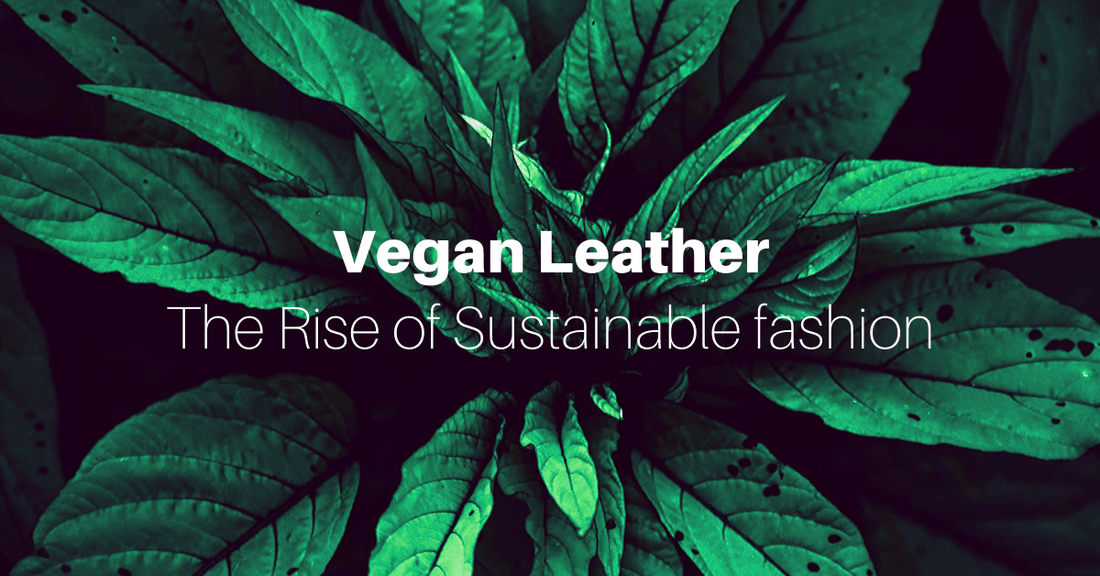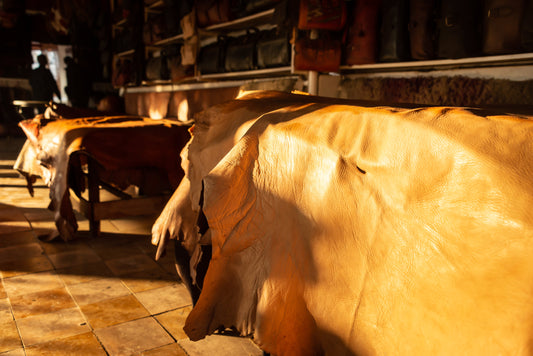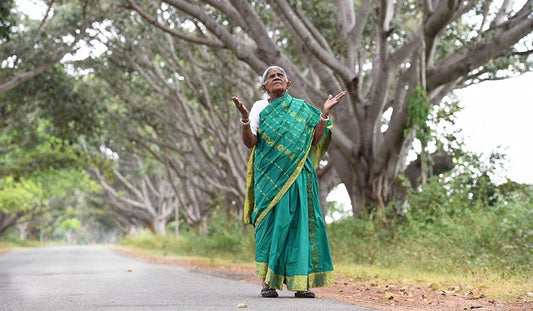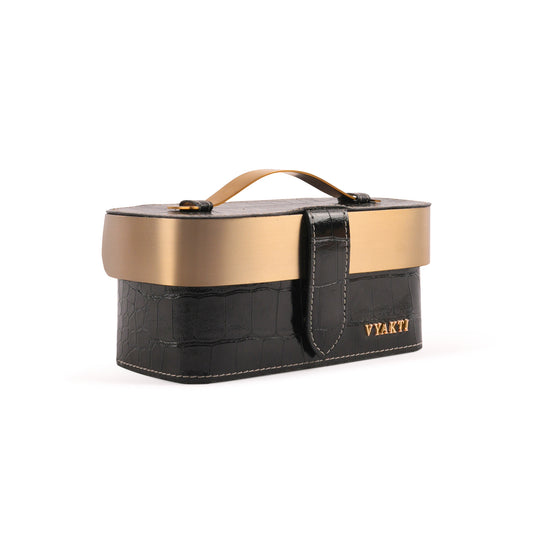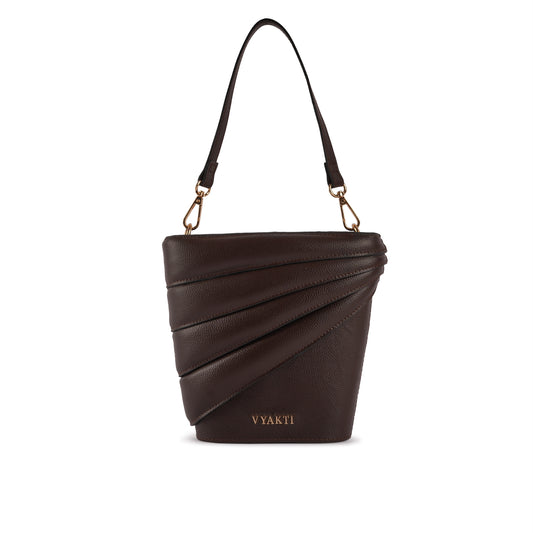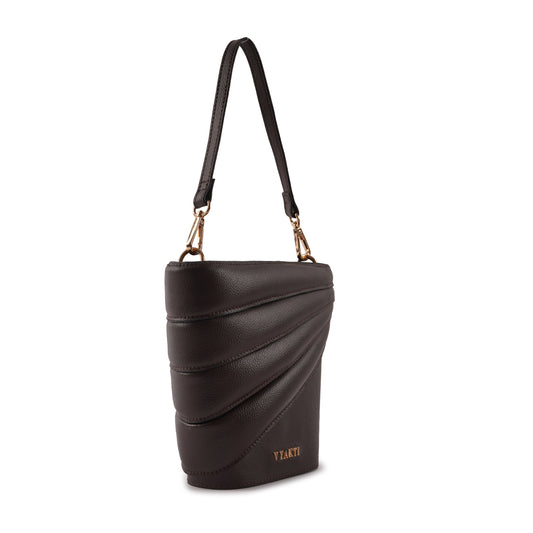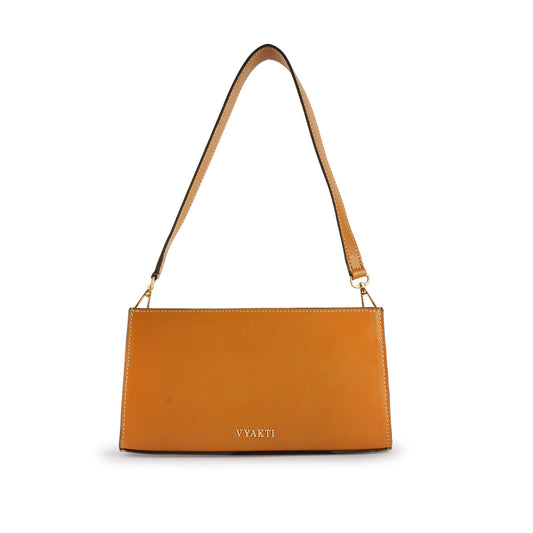The Rise of Vegan Leather: A Sustainable Revolution in Fashion
The fashion industry is experiencing a seismic shift, driven by a growing consumer conscience. Sustainability and ethical practices are no longer fringe concerns; they're at the forefront of the conversation. One of the most impactful changes is the rise of vegan leather, championed by pioneering designers and brands. In this blog post, we at Vyakti India delve into the environmental toll of animal leather, explore the exciting journey of vegan leather, and highlight the contributions of leading brands and innovative materials in this groundbreaking movement.
The Unsustainable Cost of Animal Leather
Before embracing vegan alternatives, let's acknowledge the environmental burden of the animal leather industry. This practice, spanning centuries, comes with significant consequences:
- Deforestation: The fashion industry's love affair with leather has come under increasing scrutiny due to its significant environmental impact. While greenhouse gas emissions associated with leather production are well-documented, the industry's contribution to biodiversity loss and land degradation is often overlooked.
The production of leather requires vast tracts of land for cattle grazing and feed cultivation. This land clearing not only contributes to deforestation but also disrupts fragile ecosystems, leading to a loss of biodiversity. Studies have shown that a single leather bag can necessitate the clearing of up to a hectare of land, while a pair of leather boots can require the deforestation of an area nearly the size of a football field.
The link between leather production and biodiversity destruction is particularly evident in the Amazon rainforest, where 80% of deforestation is driven by cattle ranching. In Australia, cattle production for leather supply chains accounts for 73% of deforestation and land clearing in Queensland. This loss of habitat has devastating consequences for countless species, including great gliders, swift parrots, spot-tailed quolls, jaguars, giant otters, toucans, tapirs, and many more.
- Water Pollution: The fashion industry's love affair with leather often overlooks the significant environmental impact associated with its production. One of the most concerning aspects is the exorbitant amount of water required to create leather goods.According to CIRCUMFAUNA calculations, a standard cow skin leather tote bag can consume a staggering 17,127.8 liters of water - enough to sustain a human for over 23 years. This figure doesn't even account for the additional water used at the slaughterhouse level.
As half of the world's population faces the threat of water scarcity by 2025, it's imperative to choose materials with a lower water footprint. While synthetic polyurethane, often touted as a sustainable alternative, may have a smaller water footprint compared to animal-based leather, it's not a panacea.
- Greenhouse Gas Emissions: The fashion industry's love affair with leather often overlooks the significant environmental impact associated with its production. According to the United Nations Food and Agricultural Organization, animal agriculture contributes 16.5% of all greenhouse gas emissions, with cattle rearing accounting for 62% of these direct emissions. Even vegetable-tanned leather, often touted as a more responsible process, has no significant difference in its carbon, water, or energy footprint and does not biodegrade.
Fortunately, innovative non-animal leather options like MIRUM are gaining traction in the fashion industry. These alternatives offer a more sustainable choice for clothing and accessories.
The climate impact of animal-based leather clothing and accessories versus their sustainable, animal-free counterparts is substantial. CIRUMFAUNA calculations verified by Faunalytics reveal that a cow skin leather tote bag produces 100.5 kg of CO2e, while a synthetic alternative emits just 14.4 kg of CO2e. Similarly, cow skin leather boots produce 66 kg of CO2e compared to their synthetic counterparts, which emit only 9.5 kg of CO2e. While synthetics may not be a perfect ethical solution, they offer a valuable reference point.
It's important to note that these calculations only consider the skins of cattle, not the entire production process. If the entire lifecycle were factored in, the CO2e emissions for animal-based products would be even higher, as much of the impact occurs at the farm level.
From Plastic Alternatives to Plant-Based Innovation: A Timeline
Early Beginnings: Presstoff and Leatherette
The journey of synthetic leather began in the 19th century with the invention of Presstoff in Germany, a material made from paper pulp. During World War II, when natural leather was scarce, Presstoff became a practical solution. As technology advanced, materials like leatherette emerged, providing a more durable and versatile alternative to traditional leather.
Pioneering Synthetic Materials: Corfam and Skai
In the mid-20th century, significant innovations occurred with the introduction of synthetic materials such as Corfam by DuPont and Skai by Konrad Hornschuch AG. These materials expanded the applications of synthetic leather and improved its quality, setting the stage for future developments.
Modern synthetic leather primarily consists of PVC (polyvinyl chloride) and polyurethane, layered over a fabric base made from natural or synthetic fibers. This combination provides structure and durability, but also raises environmental concerns due to the petroleum-based nature of these materials.
As awareness of the environmental impact of petroleum-based plastics grew, the demand for sustainable alternatives surged. The global plant-based leather market is projected to reach $97 million by 2027, growing at a CAGR of 7.5% from 2022 to 2027, indicating a strong shift towards eco-friendly materials.
Among the most promising plant-based alternatives is Piñatex, made from pineapple leaf fibres, which utilises agricultural waste and provides farmers with additional income. The grape skin leather, derived from the byproducts of wine production, is another innovative option that emphasises sustainability and waste reduction.
In contrast, the environmental impact of traditional leather is significant. The carbon footprint of cowhide leather can reach 110 kg of CO2e per square meter, making it nearly seven times more climate impactful than synthetic leather, which averages about 15.8 kg of CO2e per square meter. This stark difference highlights the need for sustainable alternatives in the fashion industry.
As consumer demand for sustainable and ethical alternatives continues to rise, the future of synthetic leather appears bright. With advancements in plant-based and fungal materials, the industry is poised for a revolution in both environmental impact and performance. The timeline of synthetic leather illustrates humanity's innovative spirit in addressing complex ecological challenges while catering to the growing preference for sustainable fashion.
Material Innovations Push Boundaries
As consumer demand for sustainable fashion skyrockets, researchers and innovators are constantly pushing the boundaries of vegan leather production. Here are some exciting developments:
- Mushroom Leather: Derived from mycelium (fungus root systems), this biodegradable material offers versatility in textures and colours.
- Piñatex: This innovative material utilises pineapple leaf fibres, creating a sustainable alternative with a unique texture. Beyond eco-friendliness, it empowers farming communities in developing countries.
- Recycled Plastics: Repurposing plastic waste into vegan leather tackles plastic pollution while providing a sustainable fashion option.
- Cactus Leather: Here at Vyakti India, we're proud to use Desserto cactus leather in many of our collections. This groundbreaking material offers an alternative to traditional leather. Mature cactus leaves are harvested sustainably,requiring minimal water and zero pesticides. The manufacturing process is free of harmful chemicals, ensuring minimal environmental impact.
- Banofi: This emerging plant-based leather alternative utilises discarded banana plant stems, offering a cruelty-free and sustainable option gaining recognition.
Desserto cactus leather, for example, boasts exceptional quality. It replicates the durability and texture of traditional leather while being lightweight and vegan-friendly. This versatile material is well-suited for clothing, accessories, and upholstery. Its natural beauty provides an ethical and luxurious option for conscious consumers, solidifying its position in the sustainable fashion movement.
Vyakti India is committed to partnering with innovative material suppliers like Desserto and others pushing the boundaries of plant-based leather. This aligns with our core values of sustainability and ethical production.
Conclusion: A Fashion Future Rooted in Sustainability
The rise of vegan leather signifies a transformative moment in the fashion industry. Sustainability and style are no longer mutually exclusive. With pioneering designers and brands leading the charge and innovative materials becoming mainstream, cruelty-free alternatives are becoming more accessible and appealing to consumers. Vegan leather is not just a trend; it's a revolution reshaping the fashion landscape for the better, one stylish step at a time.
SOURCE:
- https://www.rootsanalysis.com/reports/synthetic-leather-market.html
- https://www.acumenresearchandconsulting.com/synthetic-leather-market
- https://www.snsinsider.com/reports/synthetic-leather-market-1475
- https://www.precedenceresearch.com/synthetic-leather-market

